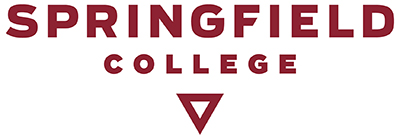Tips to Borrowing an Alternative Loan
Please review the following tips to help you choose an appropriate private loan. After reviewing the tips, print the loan comparison worksheet. The worksheet will help you compare various loans or lenders and to make your decision making easier.
Take time to review carefully your family's financial situation and identify every financing resource available. Be sure to explore all options before applying for an alternative loan. Students should consider borrowing the maximum federal Direct student loan, including the additional $2,000 unsubsidized federal Direct loan, before borrowing an alternative loan. Parents should consider borrowing a Federal Direct PLUS loan.
Determine the total amount of education debt your family is willing to accumulate during the student's college enrollment. Take into consideration the four years' worth of federal student loan debt the student will be taking on as well as what income the student may realistically expect after graduation. Use online calculators to determine future monthly payments.
Alternative loans should be the last option a student considers. The Federal Direct student loan and the Federal Direct PLUS parent loan programs are much better options. If you need to borrow an alternative loan, be sure that you have borrowed the maximum Federal Direct loan for which you are eligible. First year students may borrow up to $3,500; second year students may borrow up to $4,500; and $5,500 for each subsequent year. Students may also borrow an additional $2,000 each year in an unsubsidized federal Direct loan.
Be careful not to borrow too much in alternative loans, as this may have an adverse effect on the student's future borrowing potential. Realize that even though a parent may be the co-signer on an alternative loan, the student has the same responsibilities and obligations for repayment as the co-signer or parent. This will affect the student's future credit score. The more loan debt, the lower the student's credit score will be for future borrowing. A federal Direct PLUS loan may be a more appropriate loan to consider, as the parent is the only borrower on the loan. Don't forget that the student will have federal Direct student loans to pay back as well, so try to limit what the student will be borrowing in a private loan.
Avoid last-minute borrowing. Title X regulations of the Higher Education Opportunity Act (HEOA) delay the processing of private loan applications. Be sure to apply well before the college bill due date to avoid possible late charges.
Think long term when choosing an alternative loan. You should borrow from the same alternative loan program each year during your college career. This will make repayment easier and more cost-effective for you. Realize that if you borrow more than one type of alternative loan, you will have additional loan payments to make each month. Private loan consolidation, combining two or more different alternative loans into one new consolidated alternative loan, is possible, but the choices are limited and their terms may not be attractive, so you must choose a loan that meets your current needs as well as your future needs.
Thoroughly review and decide how important the various features of a loan are to you before choosing one. These features include fees, grace periods, lengths of repayment terms, how future interest rates are determined, co-signer release availability, borrower benefits, and payment incentives. If graduate school is in your near future, you may want the loan you choose to have a graduate school forbearance so payments would be postponed while you are enrolled. Some private loan lenders will cancel the loan if the student borrower dies.
Borrow for the year. Plan to borrow for the year and not for each semester. If you are planning to be enrolled for both the fall and spring terms, borrow enough to cover your expenses for the year. This will save you money in the long run, as you may avoid the minimum monthly payments. Also, you will not need to apply twice in one year. If you borrow for the year the college will receive one-half of the loan for the fall term and the other half for the spring. Interest will not be charged on the loan proceeds until the college receives the funds.
Choose a loan that has a competitive margin above the index. This margin will determine your future interest rates if the interest rate is variable, or one that changes. An index is a nationally recognized interest rate that is used by the lender to determine your future interest rates. The most popular indices are the Wall Street Journal (WSJ) Prime Rate and the London Inter-Bank Offered Rate (LIBOR). The margin is the amount that is added to, or subtracted from, the index that determines your interest rate. The lender determines your margin based on the credit of the co-signer and/or yourself. For example, if the index is the WSJ Prime Rate at four percent, and your margin is five points above the index, then your interest rate will be nine percent.
We recommend that students apply with a co-signer. This will reduce any fees, and lower the margin above the index in determining your interest rate. This will also help get the loan approved. Most lenders now require a co-signer on a private loan.
Carefully consider your options for a co-signer. Avoid asking a grandparent or other relative who is currently on a fixed income or will be when the loan enters repayment. Remember that if you are unable to make payments on the loan, your co-signer will be contacted and asked to make the payments for you. Any late payments on the loan will also be reflected on the co-signer's credit report. Keep all of this in mind when considering someone to act as a co-signer on your loan.
Consider the frequency of the interest rate changes. Interest rates on some loans can change every month or every three months. During a time of rising interest rates having your rate change on a monthly basis will cost you more money.
Think about the length of your repayment period and how your monthly payments will be affected. If you plan to borrow more than $20,000 in private loans for your undergraduate career, you should consider a loan that offers a 20- or 25-year repayment term. If you choose a loan with a repayment period of 15 or fewer years, your monthly payment will be large and may not be easily made. Do not forget that you will also have your federal Direct loan to pay back. Play with the online calculator to see how interest rates and term lengths affect your future monthly payments.
You may want a time period between leaving school and when monthly payments begin. If so, look for a private loan that has a grace period when payments are not due. For example, federal Direct student loans have a six month grace period after leaving school or graduating, during which time monthly payments are not required.
If the student or parent cannot make monthly principal and interest payments while enrolled, look for an alternative loan that defers these payments. We do, however, recommend that students and/or parents pay the interest that is charged on the alternative loan while the student is enrolled. If the interest is not paid while the student is enrolled the accumulated interest will be capitalized, or added onto the amount borrowed. By having the interest added onto the original amount of the loan, additional interest will be charged. You want to avoid this, as it will add to the cost of borrowing an alternative loan.
Be careful of tiered pricing. This means that the loan fee and, if the interest rate is variable, the margin above the index is determined by the credit score of the borrower or co-borrower. The differences can be quite large. Borrowers with excellent credit fare the best, with usually no fees and a low margin over the index. The advantage of the tiered pricing is that more loans can be approved using this method. But how does this affect you, the borrower? Paying nine percent of what you borrow in fees with a five point margin over the index for the life of the loan may not be the best deal. If you find yourself in a tiered pricing loan, ask yourself if you can afford the higher margin over a 15 to 20 year period of time. If you cannot be approved for a tiered pricing loan at the excellent credit level, you may be better off not borrowing that loan. Consider applying with a different co-signer or a different loan.
Some loans have a co-signer release option. This means that the co-signer can be released from the obligations of the loan after a period of time, and the student borrower will remain as the only one responsible for the loan. Be aware that to be able to release the co-signer, you must make a certain number of on-time payments before the lender will consider releasing the co-signer. Also, at the time of the request, the student borrower may need to prove that he or she is able to make payments on the loan once the co-borrower is released. If this is an important feature for you or your co-signer, inquire about the number of on-time loan payments required to release the co-signer and what other requirements are necessary to have the co-signer released.

